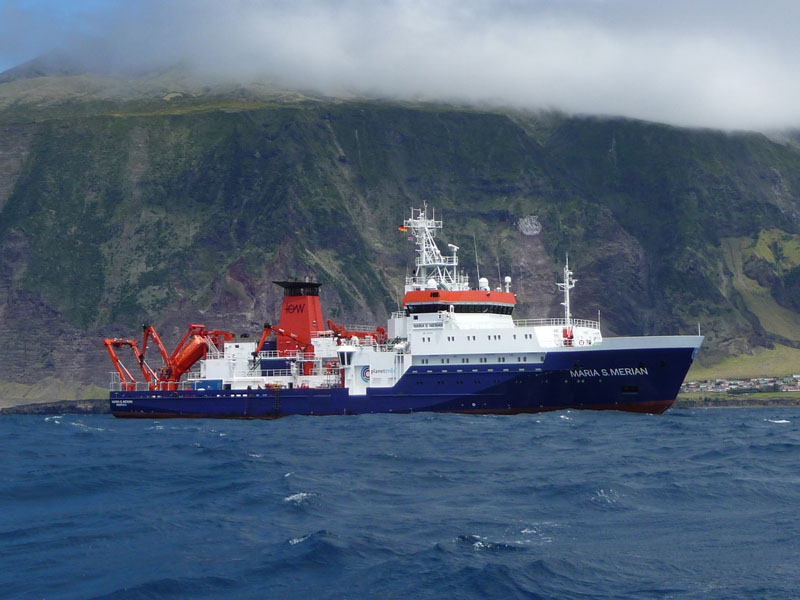MARIA S. MERIAN MSM20/2
- Area:
- South Atlantic, Tristan da Cunha
- Time:
-
17.01.2012 - 15.02.2012
- Institution:
- GEOMAR
- Chief scientist:
- Marion Jegen-Kulcsar
In the middle of the South Atlantic almost 3000 Kilometres away from the closest continent are lying the islands of Tristan da Cunha. How they came into existence is controversial among scientists. According to classical plume theory, Tristan da Cunha is a volcanic hotspot which played a major role in the rifting of the South Atlantic margins and the creation of the aseismic Walvis Ridge by impinging at the base of the continental lithosphere shortly before or during the breakup of the South Atlantic margins. However, Tristan da Cunha cannot be clearly identified as a hot-spot. It may also be classified as a more shallow type of anomaly that may actually have been caused by the opening of the South Atlantic. The scientific cruise MSM 20/2 of the German research vessel MARIA S. MERIAN will implement a multi-disciplinary geophysical study of the region by acquiring marine electromagnetic, active and passive seismics as well as gravity and bathymetric data with the goal to identify the crustal structure and temperature and partial melt anomalies in the upper mantle. In this way the scientists want to characterize the region around Tristan da Cunha with geophysical data in a more coherent way to understand the tectonic processes of the opening of the South Atlantic and the formation of the Walvis Ridge, i.e. to understand whether Tristan da Cunha is the cause or the consequence of the rifting. Chief scientist of the cruise is Dr Marion Jegen of GEOMAR.



